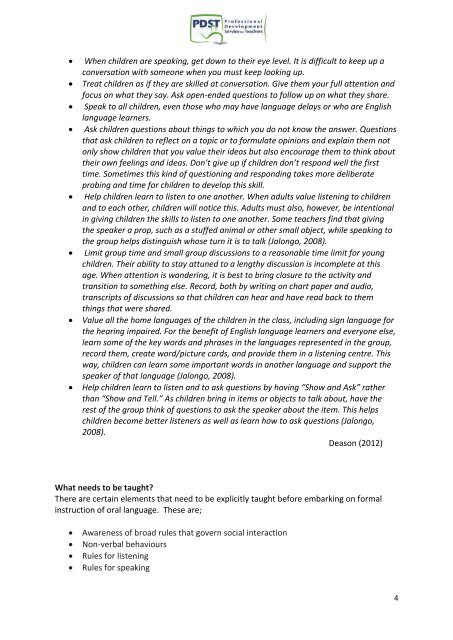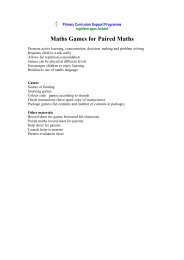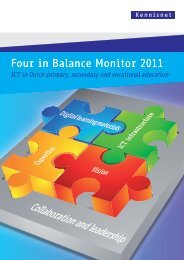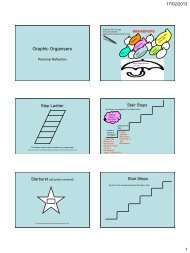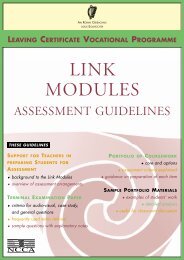Five Components of Effective Oral Language Instruction - PDST
Five Components of Effective Oral Language Instruction - PDST
Five Components of Effective Oral Language Instruction - PDST
Create successful ePaper yourself
Turn your PDF publications into a flip-book with our unique Google optimized e-Paper software.
� When children are speaking, get down to their eye level. It is difficult to keep up a<br />
conversation with someone when you must keep looking up.<br />
� Treat children as if they are skilled at conversation. Give them your full attention and<br />
focus on what they say. Ask open-ended questions to follow up on what they share.<br />
� Speak to all children, even those who may have language delays or who are English<br />
language learners.<br />
� Ask children questions about things to which you do not know the answer. Questions<br />
that ask children to reflect on a topic or to formulate opinions and explain them not<br />
only show children that you value their ideas but also encourage them to think about<br />
their own feelings and ideas. Don’t give up if children don’t respond well the first<br />
time. Sometimes this kind <strong>of</strong> questioning and responding takes more deliberate<br />
probing and time for children to develop this skill.<br />
� Help children learn to listen to one another. When adults value listening to children<br />
and to each other, children will notice this. Adults must also, however, be intentional<br />
in giving children the skills to listen to one another. Some teachers find that giving<br />
the speaker a prop, such as a stuffed animal or other small object, while speaking to<br />
the group helps distinguish whose turn it is to talk (Jalongo, 2008).<br />
� Limit group time and small group discussions to a reasonable time limit for young<br />
children. Their ability to stay attuned to a lengthy discussion is incomplete at this<br />
age. When attention is wandering, it is best to bring closure to the activity and<br />
transition to something else. Record, both by writing on chart paper and audio,<br />
transcripts <strong>of</strong> discussions so that children can hear and have read back to them<br />
things that were shared.<br />
� Value all the home languages <strong>of</strong> the children in the class, including sign language for<br />
the hearing impaired. For the benefit <strong>of</strong> English language learners and everyone else,<br />
learn some <strong>of</strong> the key words and phrases in the languages represented in the group,<br />
record them, create word/picture cards, and provide them in a listening centre. This<br />
way, children can learn some important words in another language and support the<br />
speaker <strong>of</strong> that language (Jalongo, 2008).<br />
� Help children learn to listen and to ask questions by having “Show and Ask” rather<br />
than “Show and Tell.” As children bring in items or objects to talk about, have the<br />
rest <strong>of</strong> the group think <strong>of</strong> questions to ask the speaker about the item. This helps<br />
children become better listeners as well as learn how to ask questions (Jalongo,<br />
2008).<br />
Deason (2012)<br />
What needs to be taught?<br />
There are certain elements that need to be explicitly taught before embarking on formal<br />
instruction <strong>of</strong> oral language. These are;<br />
� Awareness <strong>of</strong> broad rules that govern social interaction<br />
� Non-verbal behaviours<br />
� Rules for listening<br />
� Rules for speaking<br />
4


